|
|
|
Great Western railcars.
The Gloucester bodied railcars, numbers 5 to 18.
Numbers 5 to 7.
The underframes for the first three members of this series were built at the same time as those for numbers 2 to 4, but as the Great Western were undecided as to the type of body numbers 5 to 7 should carry, they were not completed immediately. However, the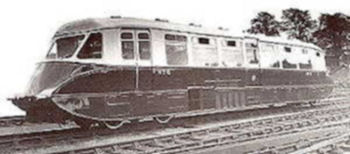 contract for constructing the bodies went to the Gloucester Railway Carriage and Wagon Co. Ltd. who instigated several improvements to the original design. Sliding doors replaced the previous opening doors to increase accessibility in busy periods and deeper windows were installed to improve the view for passengers and increase the sliding ventilator window size. The front and rear of the railcar incorporated ventilation slots above the drivers windows together with contract for constructing the bodies went to the Gloucester Railway Carriage and Wagon Co. Ltd. who instigated several improvements to the original design. Sliding doors replaced the previous opening doors to increase accessibility in busy periods and deeper windows were installed to improve the view for passengers and increase the sliding ventilator window size. The front and rear of the railcar incorporated ventilation slots above the drivers windows together with 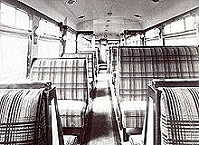 subtle changes to the curves at the drivers compartment that slightly cleaned up the design. subtle changes to the curves at the drivers compartment that slightly cleaned up the design.
In addition to the changes to the bodywork, the underframes were modified in light of experience from the previous railcars and the areas around the bogie pivots and headstocks were strengthened. While numbers 5 and 6 retained the part geared / part direct drive of the previous three models, number 7 was provided a gearbox to each of its AEC engines and so gave a greater starting tractive effort.
Delivered in July and August 1935, these first three railcars were assigned duties in the Oxford and Worcester services working between London, Hereford and Birmingham. In addition, these first cars were also used for Sunday evening mystery tours around the Worcester area. Known as 'half-crown' tours these workings travelled down to Gloucester, for example, via the Vale of Evesham and returning via Great Malvern, and proved very popular when first introduced.
Specifications of GWR Railcar Nos. 5 to 7.
|
|
|
|
|
|
|
Engine |
(2) 8.85 litre AEC diesel |
Length over buffers |
63 feet 7 inches |
|
|
Bogie centres |
40 feet |
Bogie wheelbase |
7 feet |
|
|
Seating capacity |
70 |
Fuel tank |
2 x 45 gallons |
|
|
Weight |
25 tons 6 cwt |
Maximum speed |
80 mph |
|
Numbers 8 to 17.
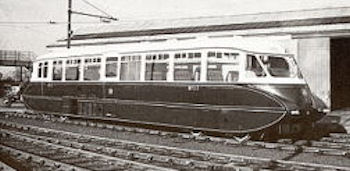 In February 1935, just prior of the delivery of numbers 5, 6 and 7 to the Great Western, an order was placed for a further 10 railcars of three designs. Numbers 8, 9 and 13 to 16 were to be of the same basic plan as the previous three models and having 70 seater bodies, numbers 10 to 12 had the installation of a lavatory with 63 seater bodies, while number 17 was designed as an express parcels car. Each of these examples used the 2 AEC 8.85 litre engines but with a gearbox fitted to each In February 1935, just prior of the delivery of numbers 5, 6 and 7 to the Great Western, an order was placed for a further 10 railcars of three designs. Numbers 8, 9 and 13 to 16 were to be of the same basic plan as the previous three models and having 70 seater bodies, numbers 10 to 12 had the installation of a lavatory with 63 seater bodies, while number 17 was designed as an express parcels car. Each of these examples used the 2 AEC 8.85 litre engines but with a gearbox fitted to each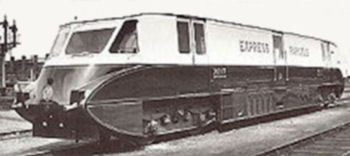 engine. engine.
From experience gained of running the railcars over the previous 12 months a number of modifications were introduced on these cars. The standard London bus AEC engine employed aluminium alloy cylinder heads, but failures of some heads, including cracking, brought the introduction of cast iron castings. Similarly, the oil temperatures had been noted as rather high on continuous high-speed running and so oil coolers, fitted at the front and rear under the buffers, were added to combat this. The previous seven railcars were subsequently fitted with these modifications.
Specifications of GWR Railcar Nos. 8 to 17.
|
|
|
|
|
|
|
Engine |
(2) 8.85 litre AEC diesel |
Length over buffers |
63 feet 7 inches |
|
|
Bogie centres |
40 feet |
Bogie wheelbase |
7 feet |
|
|
Seating capacity |
70 (8, 9, 13 - 16) 63 (10 - 12) |
Fuel tank |
2 x 45 gallons |
|
|
Weight |
29 tons 10 cwt (8, 9, 13 - 16) 29 tons 18 cwt (10 - 12)
28 tons 17 cwt (17) |
Maximum speed |
80 mph |
|
Number 18.
This experimental railcar was ordered in February 1935 at the same time as numbers 8 to 17. From the ground up, it was to be designed to haul a trailing load of 60 tons and 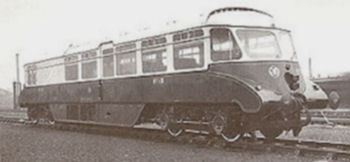 so standard railway buffers and draw gear was fitted. so standard railway buffers and draw gear was fitted.
To cope with the additional loads, a number of important alterations were made from the previous cars. The chassis members and bogie sideframes were strengthened and the bogie wheelbase was increased from 7 feet to 8 feet 6 inches. The bogie centres were also increased from 40 feet to 43 feet 6 inches to provide a more comfortable ride.
As with the previous railcars, experience gained was put to good use. The material used for the engine crankcases 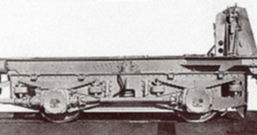 was changed from aluminium to cast iron to overcome a weak bearing housing problem, whilst the position of the two engines was altered to directly opposite each other in the centre of the car with each engine mounted on a subframe mounted to the underframe of the railcar. Another design of engine sump brought about a further increase in capacity but as the sump was of a squat pattern, the height of the engines was reduced which gave a totally flat floor above this area. was changed from aluminium to cast iron to overcome a weak bearing housing problem, whilst the position of the two engines was altered to directly opposite each other in the centre of the car with each engine mounted on a subframe mounted to the underframe of the railcar. Another design of engine sump brought about a further increase in capacity but as the sump was of a squat pattern, the height of the engines was reduced which gave a totally flat floor above this area.
The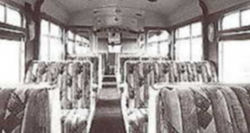 worm and wheel axle was changed to the spiral bevel type for the heavier loading and this incorporated the reversing gear while behind the gearbox was a set of reduction gears that could be changed for the railcars operating requirements of an express unit or for branch-line work. worm and wheel axle was changed to the spiral bevel type for the heavier loading and this incorporated the reversing gear while behind the gearbox was a set of reduction gears that could be changed for the railcars operating requirements of an express unit or for branch-line work.
A 49 seat body was used although of a slightly different pattern to that used earlier in that the side valances were fitted between the bogies as experience with the previous railcars usually meant that the bogie access panels were removed after a few months in service. It was originally intended that the trailer was to be of a similar design to number 18 with a driving compartment at one end, but the design was not used and a standard GWR auto-trailer coach was provided. A Clarkson boiler was installed for heating of the railcar and trailer with heat obtained from the engines exhausts.
When the railcar was taken into stock in April 1937, it was assigned to the Lambourn branch with its first working of the day as a mail and newspaper delivery trip from Reading to Basingstoke.
Specifications of GWR Railcar No. 18.
|
|
|
|
|
|
|
Engine |
(2) 8.85 litre AEC diesel |
Length over buffers |
65 feet 8 inch |
|
|
Bogie centres |
43 feet 6 inches |
Bogie wheelbase |
8 feet 6 inches |
|
|
Seating capacity |
49 |
Fuel tank |
2 x 45 gallons |
|
|
Weight |
33 tons 12 cwt |
Maximum speed |
80 mph |
|
Copyright © by John Daniel 2013.
|

 contract for constructing the bodies went to the Gloucester Railway Carriage and Wagon Co. Ltd. who instigated several improvements to the original design. Sliding doors replaced the previous opening doors to increase accessibility in busy periods and deeper windows were installed to improve the view for passengers and increase the sliding ventilator window size. The front and rear of the railcar incorporated ventilation slots above the drivers windows together with
contract for constructing the bodies went to the Gloucester Railway Carriage and Wagon Co. Ltd. who instigated several improvements to the original design. Sliding doors replaced the previous opening doors to increase accessibility in busy periods and deeper windows were installed to improve the view for passengers and increase the sliding ventilator window size. The front and rear of the railcar incorporated ventilation slots above the drivers windows together with  subtle changes to the curves at the drivers compartment that slightly cleaned up the design.
subtle changes to the curves at the drivers compartment that slightly cleaned up the design. In February 1935, just prior of the delivery of numbers 5, 6 and 7 to the Great Western, an order was placed for a further 10 railcars of three designs. Numbers 8, 9 and 13 to 16 were to be of the same basic plan as the previous three models and having 70 seater bodies, numbers 10 to 12 had the installation of a lavatory with 63 seater bodies, while number 17 was designed as an express parcels car. Each of these examples used the 2 AEC 8.85 litre engines but with a gearbox fitted to each
In February 1935, just prior of the delivery of numbers 5, 6 and 7 to the Great Western, an order was placed for a further 10 railcars of three designs. Numbers 8, 9 and 13 to 16 were to be of the same basic plan as the previous three models and having 70 seater bodies, numbers 10 to 12 had the installation of a lavatory with 63 seater bodies, while number 17 was designed as an express parcels car. Each of these examples used the 2 AEC 8.85 litre engines but with a gearbox fitted to each engine.
engine.  so standard railway buffers and draw gear was fitted.
so standard railway buffers and draw gear was fitted. was changed from aluminium to cast iron to overcome a weak bearing housing problem, whilst the position of the two engines was altered to directly opposite each other in the centre of the car with each engine mounted on a subframe mounted to the underframe of the railcar. Another design of engine sump brought about a further increase in capacity but as the sump was of a squat pattern, the height of the engines was reduced which gave a totally flat floor above this area.
was changed from aluminium to cast iron to overcome a weak bearing housing problem, whilst the position of the two engines was altered to directly opposite each other in the centre of the car with each engine mounted on a subframe mounted to the underframe of the railcar. Another design of engine sump brought about a further increase in capacity but as the sump was of a squat pattern, the height of the engines was reduced which gave a totally flat floor above this area. worm and wheel axle was changed to the spiral bevel type for the heavier loading and this incorporated the reversing gear while behind the gearbox was a set of reduction gears that could be changed for the railcars operating requirements of an express unit or for branch-line work.
worm and wheel axle was changed to the spiral bevel type for the heavier loading and this incorporated the reversing gear while behind the gearbox was a set of reduction gears that could be changed for the railcars operating requirements of an express unit or for branch-line work.